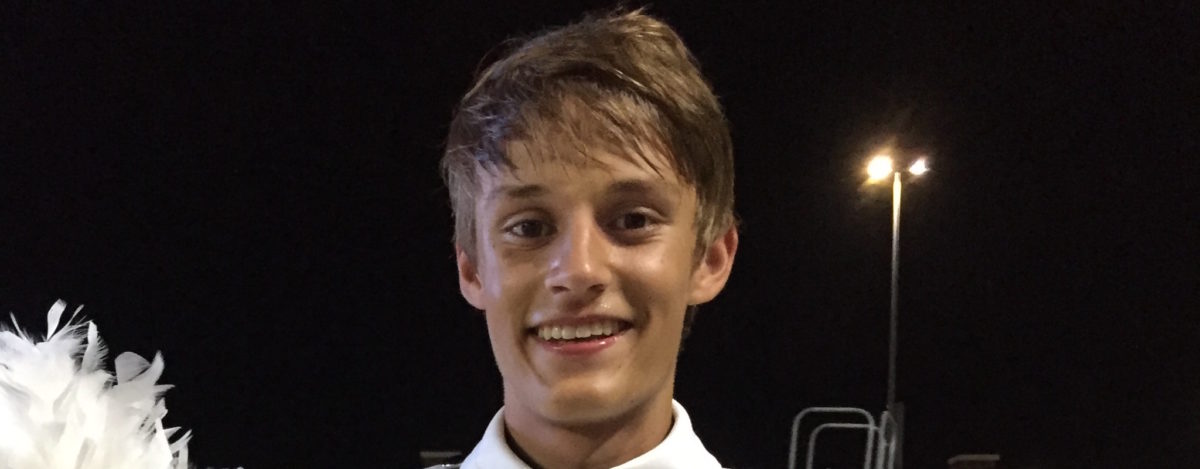A Diagnosis Timeline: Why T1D Awareness Matters
March 2012: I tore my anterior cruciate ligament (ACL) and I had ACL reconstruction surgery a month later. Rehabilitation was tough, but not as tough as what was heading my way later in the year.
During one of my follow-up appointments, my knee surgeon notified me that he would not be available for a week, as he would be traveling. He explained that his son with type 1 diabetes was going to a soccer camp. As I was typically ignorant of anything to do with type 1 diabetes (T1D), I muttered something like, “Oh, sorry about that.” In hindsight, my response was incredibly insensitive and void of empathy.
Summer 2012: Over the next few months, we started noticing different issues. My son, Matthew, has always been on the lean side and struggled to gain weight. He suddenly started to look really thin. He struggled with strep throat and it just wouldn’t clear up, despite being treated with antibiotics. He had mouth sores that wouldn’t heal—we put those down to the braces he’d been wearing for a few months. He had uncharacteristic outbreaks of anger, which friends assumed was due to his age. Hormones. He was 11. There really was an answer for everything …or so I thought.
October 2012: Matthew started to look really gaunt. He was constantly hungry. He was constantly tired. He wanted to go to bed at 8pm. I put that down to him having just started at middle school. Plus, he didn’t like reading—so he clearly wanted to go to sleep early because he could avoid reading in bed. I knew the answers … or so I thought.
November 2012: My mother-in-law was the first to say “diabetes.” I remember scoffing at the suggestion. How could Matthew have diabetes? He’d always had a really well balanced diet, he ate his vegetables and we ate organic and non-GMO food whenever possible. I had breastfed him and had made his baby food myself by pureeing organic fruits and veggies. He drank water, not soda. He was thin. There was no way my thin, healthy child could have diabetes.
Of course, I was like the majority of the misinformed world back then. After dinner, I started looking up his symptoms. Weight loss, fatigue, drinking more water than normal. Type 1 diabetes kept coming up in the searches. As I read more about what T1D would mean for him, my heart was starting to break. I really hoped that I was wrong. Of course, being still very uniformed on T1D, I didn’t rush him to the ER like I really should have. I waited until the morning to call our pediatrician.
 November 13, 2012: My son’s D-Day came right before World Diabetes Day. First, the nurse asked him to pee on a strip. He came back and the nurse announced ketones were very high. Then she checked his blood sugar. It was 562mg/dL (31.19 mmol/L).
November 13, 2012: My son’s D-Day came right before World Diabetes Day. First, the nurse asked him to pee on a strip. He came back and the nurse announced ketones were very high. Then she checked his blood sugar. It was 562mg/dL (31.19 mmol/L).
Matthew was in diabetic ketoacidosis (DKA). He was urgently admitted into Texas Children’s Hospital, where I watched my child in a battle with his body as doctors explained his blood sugar levels would need to be brought down very slowly. They explained that brain damage could occur from DKA. I was horrified that I had allowed my son to get so sick. The guilt I felt was horrendous. Thankfully, the incredible doctors at Texas Children’s told us right away that T1D is not preventable.
Today: Matthew was born in the U.K., where new parents are given a red book of valuable information about everything from how to handle a baby to identifying meningitis. Then we moved to the U.S., where your pediatrician gives you age-appropriate handouts about what parents need to know.
But at no time had I ever been informed about type 1 diabetes. It was not on my radar. In my opinion, this is a huge failing and it must be addressed. Why are pediatricians not warning us of the signs and symptoms? Why is it not in the red book? Why don’t we see it on TV commercials or in magazines?
It took seconds for a finger prick to confirm the high blood sugar reading. Literally. Seconds. Plus, the cost of a test strip is maybe a dollar. A DKA hospitalization costs thousands of dollars. But the cost is irrelevant when a life is lost. It is heartbreaking and infuriating because it is entirely preventable.
As a mother that almost lost her child to a late diagnosis of T1D, I have made it my mission to personally do what I can to raise awareness. The Beyond Type 1 DKA Campaign is the first step to trying to make a difference. Along with Amy Josefy, I was a parent advocate who brought this campaign to Texas. We still have much work to do. We need pediatricians to get on board and make sure families are educated in this area.
If a red book or a parent handout about diabetes had been available to me, I would have likely have connected the dots much faster. If a finger prick becomes as commonplace as checking blood pressure, weight, height and temperature during triage, maybe new diagnoses of T1D could be picked up much sooner. Lives could be saved. Let’s work on creating change.





